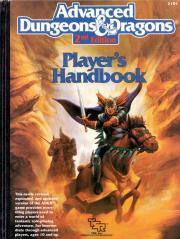Advanced Dungeons & Dragons 2nd Edition
When Advanced Dungeons & Dragons 2nd Edition appeared in 1989, it did more than revise a rule system; it extended a cultural experiment. For Johan Huizinga, play is not merely diversion but the wellspring of culture itself—a serious activity cloaked in joy, a voluntary entrance into ritual space where imagination becomes binding. In this sense, AD&D 2nd Edition is both game and cultural artifact, a codex of rules that transforms pastime into participatory myth.
The great labyrinth of tables, character classes, and campaign settings might at first seem forbidding. Yet its complexity functions less as an obstacle and more as a threshold. To step into the game is to accept constraint, to inhabit what Huizinga termed the “magic circle” of play, where the ordinary is suspended and new meanings are enacted. Dice rolls and initiative orders may seem mechanical, but in practice they channel uncertainty, destiny, and the primal drama of risk.
What elevates this edition is its encouragement of shared storytelling. Campaigns did not merely unfold; they were constructed communally, each participant adding a thread to the tapestry. The Dungeon Master became less tyrant and more arbiter of myth, shaping events but never fully dictating them. Here, play becomes ritual—a gathering where rules and improvisation coexist, binding friends in fellowship and narrative co-creation.
Culturally, AD&D 2nd Edition reflects a transitional moment. It softened some of the harsher edges of its predecessor, excising elements deemed controversial, while amplifying the richness of its imagined worlds—Forgotten Realms, Ravenloft, and Dark Sun among them. This expansion gave players a sense not just of play but of belonging to alternate civilizations, where law, chaos, good, and evil contended in ways both reflective of and removed from the world outside the table.
In Huizinga’s view, civilization arises from the impulse to play, ritualizing competition, storytelling, and law into durable cultural forms. AD&D 2nd Edition stands as a striking modern proof of this thesis. It offered more than rules—it offered a framework for culture in miniature, a place where imagination took on the weight of tradition, where laughter and seriousness intermingled, and where fellowship itself became the greatest treasure.
Thus, the edition endures not because it is the most streamlined or efficient, but because it exemplifies Huizinga’s ideal: play that transcends recreation to become culture, binding its participants in a joyful and serious pursuit of human possibility.
The great labyrinth of tables, character classes, and campaign settings might at first seem forbidding. Yet its complexity functions less as an obstacle and more as a threshold. To step into the game is to accept constraint, to inhabit what Huizinga termed the “magic circle” of play, where the ordinary is suspended and new meanings are enacted. Dice rolls and initiative orders may seem mechanical, but in practice they channel uncertainty, destiny, and the primal drama of risk.
What elevates this edition is its encouragement of shared storytelling. Campaigns did not merely unfold; they were constructed communally, each participant adding a thread to the tapestry. The Dungeon Master became less tyrant and more arbiter of myth, shaping events but never fully dictating them. Here, play becomes ritual—a gathering where rules and improvisation coexist, binding friends in fellowship and narrative co-creation.
Culturally, AD&D 2nd Edition reflects a transitional moment. It softened some of the harsher edges of its predecessor, excising elements deemed controversial, while amplifying the richness of its imagined worlds—Forgotten Realms, Ravenloft, and Dark Sun among them. This expansion gave players a sense not just of play but of belonging to alternate civilizations, where law, chaos, good, and evil contended in ways both reflective of and removed from the world outside the table.
In Huizinga’s view, civilization arises from the impulse to play, ritualizing competition, storytelling, and law into durable cultural forms. AD&D 2nd Edition stands as a striking modern proof of this thesis. It offered more than rules—it offered a framework for culture in miniature, a place where imagination took on the weight of tradition, where laughter and seriousness intermingled, and where fellowship itself became the greatest treasure.
Thus, the edition endures not because it is the most streamlined or efficient, but because it exemplifies Huizinga’s ideal: play that transcends recreation to become culture, binding its participants in a joyful and serious pursuit of human possibility.
Mini Review: AD&D 2nd Edition emerges as a testament to play’s civilizing power. Its labyrinth of rules and lore is less burden than invitation, shaping a shared imagination that transcends mere pastime. Here play becomes culture, ritual, and fellowship, binding participants in a serious yet joyful exploration of human possibility.

